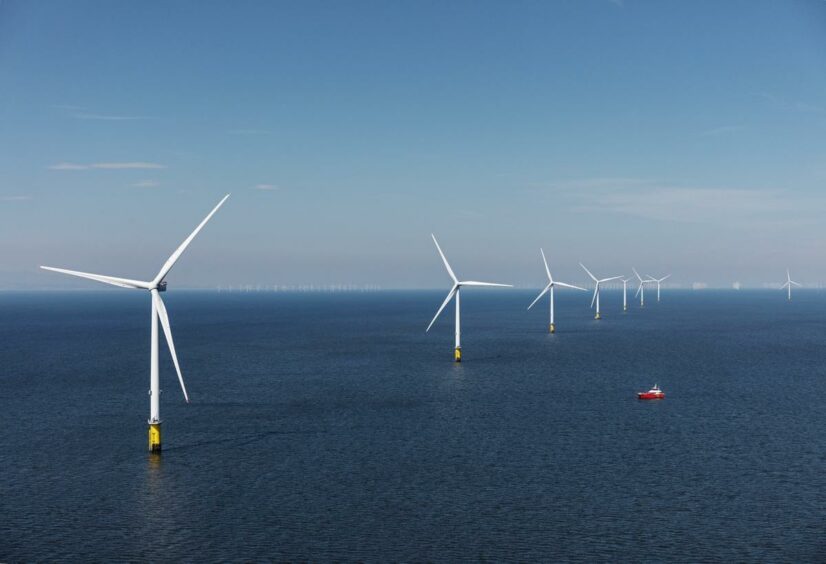
As the day draws nigh when the winners are announced in the great ScotWind lottery, the lists of promises from prospective developers grow longer and more sophisticated. There is nothing they will not do for communities and supply chains. I hope somebody is keeping note.
Whether these are enforceable or deliverable commitments is another story and that will depend not only on the bankability of what the silver-tongued suitors promise – which should certainly not be taken for granted – but also the existence of infrastructure which makes it all possible.
The experience so far must never be forgotten. By the time anyone woke up to the fact that all the hardware was being imported with the promised “second industrial revolution” a mirage for Scotland, the horse had bolted, never to return. Unless the planning and investment happen soon, the moment will again pass.
Even when the abject failure to keep more than a fraction of the work in Scotland became politically embarrassing, the energy giants were able to say: “Well, we’d love to send you more than a few crumbs but unfortunately, the infrastructure doesn’t exist, so we can’t”. And that was an impossible argument to win. Now the stakes are far higher.
It is inevitable work will come to Scotland, and particularly the north-east, as a result of ScotWind simply because of scale and proximity. The big question is: “How much?”. The answer will depend on two factors – second, the determination of government this time to force the issue but, before that, the infrastructure to make it feasible. That is the key to the outer door before you even get to the inner one of corporate decision-making.
I attended an event in the Houses of Parliament recently when much the same challenges were being addressed in respect of the Celtic Sea which, alongside the North Sea, is the big prospective UK area for floating offshore wind. We could learn a few lessons.
In Scotland, the talk is about “transition” to offshore renewables from the oil and gas industry. We have adaptable skills. We have a labour force. But do we have the infrastructure which makes it all possible?
There is a different background in the Celtic Sea area which is bounded by South West England, South Wales and the south-east of Ireland. By and large, they are starting from a low industrial base and there is excitement about the prospect of creating a whole new industry from a standing start.
The key to their approach is teamwork, not a word we hear a lot of in Scotland. There is no constitutional friction. All political parties, with the Irish Ambassador for good measure, were on the same side. Business and public sector are hand-in-hand. And a leading catalyst has – unusually in my experience but credit where it is due – been the Crown Estate.
They need to upgrade ports and develop a supply chain. The latter is the main reason for encouraging stepping-stone projects up to 300MW before getting onto the big stuff – an approach which the Scottish Government is, rather oddly, resisting. Given the need for transition, it surely makes sense to give supply chain companies the chance to acquire vital renewables experience as soon as possible.
Back in August, the Scottish Offshore Wind Energy Council produced a report which set five key objectives. By far the most concrete and urgent was “the establishment of a collaboration framework focused on building confidence amongst Scottish ports, so that required investment is brought forward in time”. The report led by Sir Jim McDonald, principal of Strathclyde University, urged the creation of “a Scottish Floating Offshore Wind Port Cluster”.
This is the right language and the study found that such a cluster, requiring an additional 22 hectares of port capacity, “could bring the manufacture of floating offshore wind platforms to Scotland, with ports acting in partnership to provide the required infrastructure area and capability needed to attract manufacturers to use Scottish ports”.
However, Jim McDonald also warned: “Scotland will be one of the first countries in the world looking to deliver floating offshore wind. However, winning this opportunity will need collective effort and determination. Scottish Ministers and industry leaders must clearly understand and provide the level of commitment and action needed, and create the opportunity to forge an effective partnership if we are to grow Scottish success.”
The questions which should be asked regularly at Holyrood are: “What progress has been made towards these objectives”. Are the needs “clearly understood”? Are the “effective partnerships in place”. If so, please tell us about them, regularly and in some detail. Otherwise, there will be grounds for scepticism.
When these ScotWind licences are allocated next month, the gold rush will have started. Hypothesis will give way to reality. The teams are ready at the starting line and what they can credibly be offered within a relatively short time frame will determine the future shape of this industry for decades to come.
Scotland has huge advantages to start with but as experience as shown, that will count for little in corporate boardrooms unless cast-iron commitments are extracted and the means to deliver them ensured. A reality check on where we stand and what must be done is needed very soon.
Brian Wilson is a former UK energy minister.
Recommended for you
